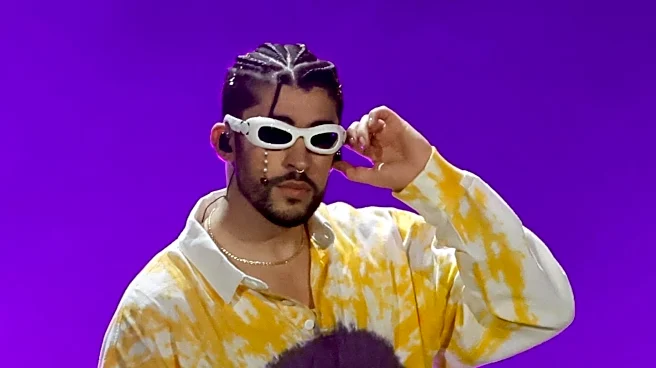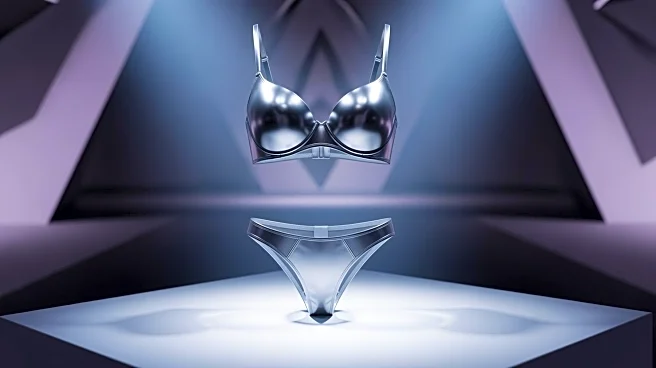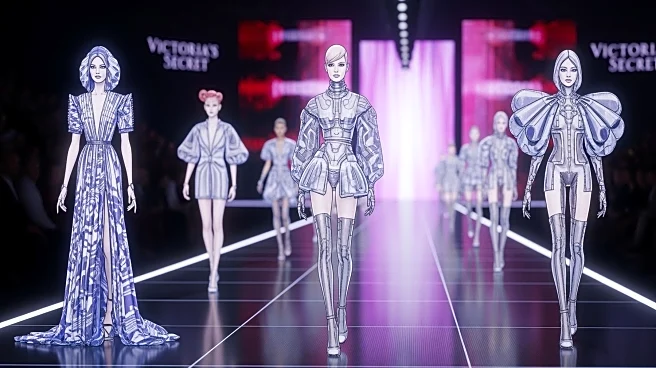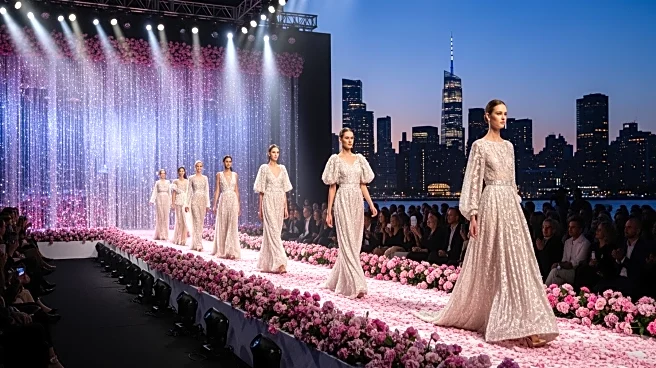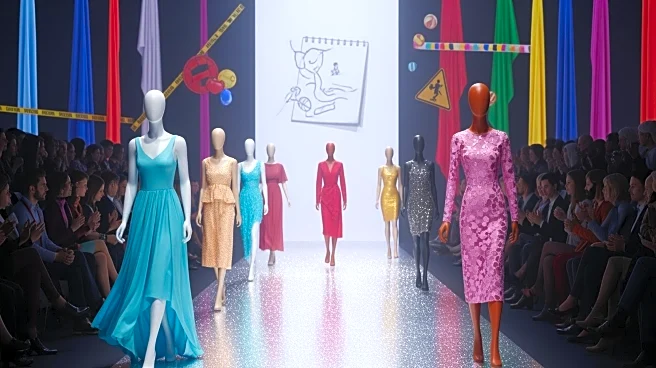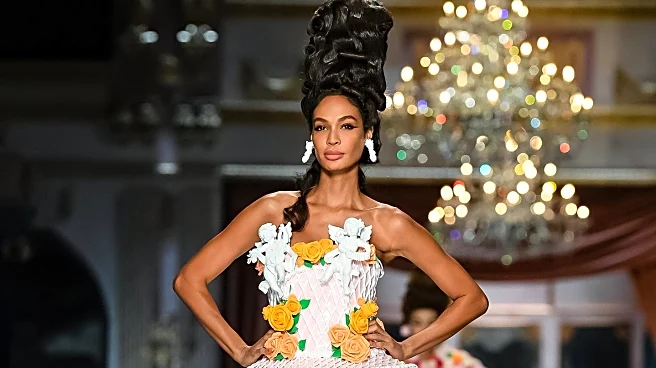What's Happening?
Adam Selman made his debut at the Victoria's Secret Fashion Show in Brooklyn, marking a significant moment in the brand's history. The show featured performances by artists such as Madison Beer and Missy
Elliott, and included a runway appearance by WNBA star Angel Reese. Selman, who was appointed as SVP and Executive Creative Director of Victoria's Secret in April, is known for his work with Savage x Fenty and his own label. His debut showcased a shift towards more inclusive and diverse representations of beauty, highlighted by Jasmine Tookes, who walked the runway while pregnant. This marks a departure from the brand's previous standards, which were criticized for lack of diversity.
Why It's Important?
The inclusion of diverse body types and the emphasis on fun and playful designs represent a strategic shift for Victoria's Secret, aiming to revitalize its brand image and appeal to a broader audience. This move could potentially impact the lingerie industry by setting new standards for inclusivity and diversity. It also reflects a broader trend in fashion towards embracing different body types and redefining traditional notions of beauty. The success of this approach could influence other brands to adopt similar strategies, thereby reshaping industry norms.
What's Next?
Victoria's Secret will likely continue to evolve its brand image under Selman's leadership, focusing on inclusivity and diversity. The reception of this show could influence future marketing strategies and product lines. Stakeholders, including consumers and industry competitors, will be watching closely to see if this new direction translates into increased sales and brand loyalty. The company may also explore collaborations with other artists and designers to further enhance its appeal.
Beyond the Headlines
This development could have cultural implications, challenging long-standing beauty standards and promoting a more inclusive representation of women in media. It may also spark discussions about the role of fashion in shaping societal perceptions of beauty and body image. The shift could encourage other industries to reconsider their approach to diversity and representation.
